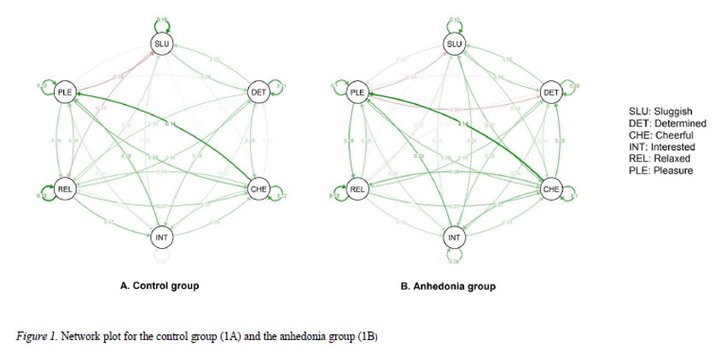Reciprocal associations between positive emotions and motivation in daily life

Anhedonia reflects a dysfunction in the reward system, which can be manifested in an inability to enjoy pleasurable situations (i.e., lack of positive emotions), but also by a lack of motivation to engage in pleasurable activities (i.e., lack of motivation). Little is known about the interrelations between positive emotions and motivation in daily life, and whether these associations are altered in anhedonic individuals. In the present study, we used a network approach to explore the reciprocal, lagged associations between positive emotions and motivation in anhedonic individuals (N = 66) and controls (N = 68). Participants (aged between 18 and 24 years) filled out momentary assessments of affect 3 times per day for 30 consecutive days. Our results showed that (a) anhedonic individuals and controls had similar moment-to-moment transfer of positive emotions; (b) in the anhedonic network feeling cheerful was the node with the highest outstrength, both within this group and compared with the control group; (c) feeling relaxed had the highest outstrength in the control network, and (d) anhedonic individuals had stronger pathways from positive emotions to motivation than controls. Taken together, our findings suggest that low levels of positive emotions lead to decreased motivation in the anhedonic group, which could instigate a negative spiral of low pleasure and low motivation. On a more positive note, we showed that cheerfulness had the highest outstrength in the network of anhedonic participants. Hence, interventions may focus on increasing cheerfulness in anhedonic individuals, as this will likely have the greatest impact on other positive emotions and motivations.